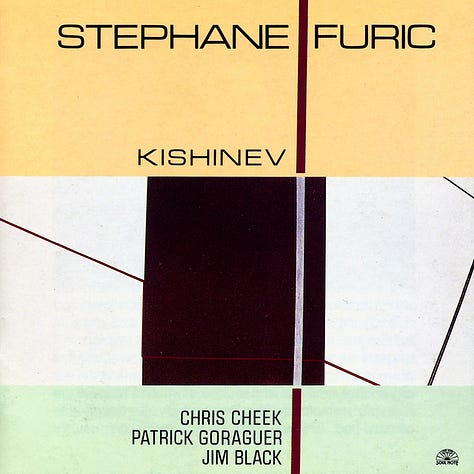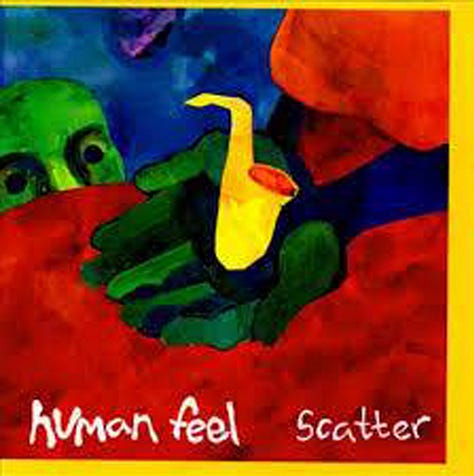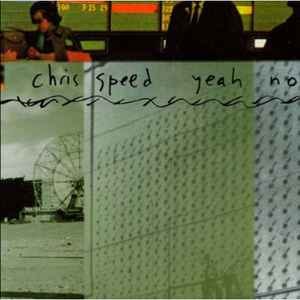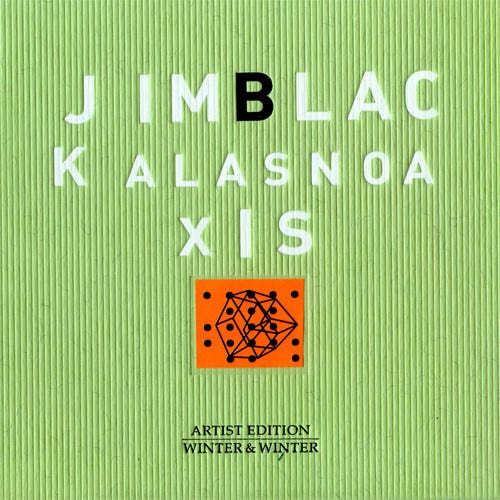Being a drummer is not just about playing a lot of great drumistic stuff. It’s about who you are playing with and your ideas as an improviser. (emphasis added).
-Jim Black, Modern Drummer, 1998
First, it’s the sound.
A cranked-tight-as-a-bongo high tom, a low-pitched, thuddy middle tom and floor tom; a bass drum tuned so loose and hit so hard that it sounds almost electronic; dozens of muffled, un-ringing cymbals and metallic objects spread across the kit; a kitchen sink of metal and wood percussion sits on the floor; and in the stick bag, a kitchen drawer of striking and scraping utensils, used in any combination, on any surface in reach— Jim Black not only assembled a diverse collection of sound sources, he also created the contexts to use them.
His sound suggests new music, new bands, new listeners……
Jim Black connects the worlds of jazz, rock, electronic music, and free improvisation, seamlessly coursing between and blending these references. But, those are the ingredients of the dish; they’re not the flavor, not the essence, not the meaning. Jim’s playing, like all the masters, is much more than the sum of his influences and references.
This is a more personal essay then some others, and I’m going to stake a bold claim here, and say, right off, what the essential message of Jim’s music is, as I’ve heard it:
Community and connection.
As a young person, it was Jim’s sound that brought me into a community; it was through Jim’s sound that I made a connection; I now consciously try to forge those connections and create that community with writing and playing.
When I was in college, pre-social media, I knew folks who had favorite bands, and those bands were central to their lives and identity. Usually, they were locally-based bands, and going to see them was the center of my friends’ social lives. The band members were almost like folk heroes, the audience was an extended friends’ network; this is sort of the indie-rock ideal.
For me, for a brief period, that was Jim Black and Co.
Today, as I write this, I can instantly recall the thrill of the first half-dozen or so Jim Black gigs I saw in 2000 and 2001 at Tonic, the Knitting Factory, Internet Cafe, and at least two other places whose names I can’t remember. It was a scene, a hang, a community— the shows were packed, the places they played were affordable, the audiences were young, etc. etc. It was happening, probably the closest to an organic, contemporary youth movement I’ve ever been.
Those young, hip audiences at Jim Black gigs were there for the music, first and foremost, and the music was totally unlike anything I’d experienced. There were loud guitars playing Nirvana-like riffs; careening saxophones and sputtering, shrieking trumpets; a fun, totally irreverent, and punk-like atmosphere. A nice modern jazz theme would get splintered and broken, and suddenly Jim would be bowing a cymbal or pounding his toms, the band screeching off to some other zone, the nice theme gone forever, and the audience was loving it— this was their music, and I would stand there, wide-eyed and slack-jawed, loving the sound, on fire with the possibilities of music.
Every Jim Black show I saw was with a slightly different combination of many of the same people— saxophonists Chris Speed, Andrew D’Angelo, Oscar Noriega, Tim Berne; trumpeters Dave Douglas (who was, of course, becoming quite well-known as a bandleader at the time) and Cuong Vu, guitarists Hilmar Jensson, Brad Shepik, Ben Monder; electric bassist Skuli Sverrisson, and others.
But it was Jim that seemed to define the music; I sensed then that Jim was a connector, a linchpin, an axis around which a whole community turned; Jim was at the center of the spoke. The music had a kind of collective identity; a Ben Monder show with Jim sounded very different from Chris Speed’s gig with Jim, of course, but Jim was connecting those bands, communicating between them.
A little later, I had a chance to study with Jim at the Banff Jazz Workshop, and he was great, a generous teacher, mentor, supporter. At a drum lesson, he talked expansively about his favorite players (I specifically remember him talking about Tain, Paul Motian, Joey Baron, and Elvin Jones); he listened to the nightly student gigs; demonstrated his recent sound designs on his laptop; played duet mini-concerts with Chris Potter and Kenny Werner; and was, generally, the center of the action.
Here’s a memory, or impression, from over 20 years ago— I hadn’t thought about this until this week, working on the final draft of this essay:
One day, at Banff, I think it was the afternoon, I was listening to Jim and suddenly he just sounded different to me— what had seemed wild, or weird, or confusing in his playing now made sense, perfect sense. I was hearing Jim’s personality, his life, his many musical relationships and interests— that’s what he was playing. This might have been the first time it hit me: this is what the music is all about: life, communication, connection.
I’m getting some chills just typing this out, so strong yet vague is this impression from that summer, years ago. Maybe I had finally connected with Jim the musician, instead of just digging him.
That’s all a long time ago, those nights listening to Jim Black and Co. create some magical places in the world, and then a few days around him at a jazz workshop. More recently, I see Mr. Black whenever I can, whenever he’s in town, and am thrilled that many friends and colleagues— guitarists Jonathan Goldberger and Keisuke Matsuno, bassists Simon Jermyn, Chris Tordini, and Thomas Morgan, saxophonist Charlotte Greve, pianist Elias Stemeseder— have all played and recorded with Jim Black; when I play with them, I’m getting some of that Jim Wisdom.
It was such a brief moment, such a tiny slice of time, just two years that I was around Jim regularly, and I can remember all kinds of personal ups and downs from those years, lots of insecurity about playing, and early, awkward steps into professional music-making. All typical stuff, nothing to be hung about; in the best way, none of that stuff matters to me anymore.
But those moments with Jim and Co.— and I was very much on the outer-outer circle, just a kid at a few shows who took some lessons with Jim— those matter. That community of Jim’s, that was the first jazz community, or music community, that I felt connected to.
Today, I feel connected to many different families and communities, and I’m consciously trying build bridges between them, and spread that goodness, just like Jim shared with me years ago. 1
How did Jim develop his sound, the thing that started it all?
He’s always been transparent about his influences, speaking openly about Joey Baron and Bill Frisell on Before We Were Born, or what an impact Albert Ayler and Cecil Taylor had on him; but if it were just influences, we’d all sound like Jim. I’ve listened to the same records he has, and I don’t sound like Jim.
So how did he do it?
I can’t say, but Jim Black has been making records since 1990, and he played on some great records at the beginning of his career. I went on the Lord Discography, typed in his name, and started listening. Here’s what I learned:



Jim Black was born in 1967, and grew up in Seattle; he was a music-obsessed 15 year-old when he joined a Seattle youth big band in 1982, where he first met both Andrew D’Angelo and Chris Speed. Arriving at Berklee in 1985, he deepened his connection with peers D’Angelo and Speed; met Kurt Rosenwinkel, Chris Cheek, and other young virtuosos; studied with Alan Dawson and Gary Chester; and was exposed to the heart core of the jazz tradition, seeing Ornette Coleman, Elvin Jones, Tony Williams, Wynton and Tain, and others.
By 1989, Black had already toured Europe, formed Human Feel with D’Angelo and Speed, and begun recording. French-born bassist Stephane Furic’s Kishinev (Soul Note, recorded July, 1990) is Jim’s first easily findable recording.
This is a great record (totally unknown to me when I started this essay and currently streaming on Apple Music), and features a wonderful performance from Jim. Black and Furic are joined by pianist Patrick Goraguer and Mr. Chris Cheek for a program of originals by Furic, plus a version of Ornette’s “The Sphinx”.
The open, free-ish sound of Kishinev immediately suggests the Keith Jarrett American Quartet and adjacent influences, and Jim references Jack DeJohnette, Paul Motian (“The Sphinx”, “Two Deuces”), and some Jeff Watts (Jim’s solo intro on “New Alliance”). However, something of the mature Jim Black sound is heard in the piano/drum duet on the title track; Black’s willingness to go there would soon yield even more treasures.
Human Feel’s Scatter (GM, recorded April, 1991) is also a widely-available early release; Jim was just 23 years old and boldly asserting an identity as a composer, collaborator, and improviser. Here, Human Feel (Jim Black, Andrew D’Angelo, Kurt Rosenwinkel, and Chris Speed) a famously bass-less quartet, are joined by a bassist, Mr. Joe Fitzgerald, well-known and widely respected in NYC. Did they become a bass-less quartet when Joe couldn’t make a gig?
On Scatter, all of Jim’s references are present— free improvisation, something from rock music, modern jazz, and a “percussionist” sensibility, a focus on color, texture, and variety as opposed to groove and momentum. The pieces of the puzzle are now before us; we’ll listen as Jim starts assembling them.
Check out Jim’s highly-Tainish fill at 0:24 on the opening track, and Jim’s swing feel behind Kurt on “Low Joe” . On “Older Sports”, a Jim tune in the Paul Motian/Bill Frisell world, but Black is no longer imitating his forebears; he’s personalizing his approach, referencing post-rock and adding some virtuosity. Joey Baron and Paul Motian wrote the script, but Jim’s adding some lines of his own.
Further evidence of Jim’s growing confidence can be heard on “Kelleysickle”, as the band alternates between melody fragments, while on “Rumpelstiltskin”, Jim is edging towards his percussionist role. The loud cymbals at the end of the track are entirely inappropriate and most welcome; Jim Black is here.
Months after recording Scatter, Jim was in Berlin recording with European guitarists Frank Mobus (Der Rote Bereich, Jazz4Ever, recorded June 1991) and Andreas Willers (Cityscape, Soundaspects, recorded August 1991). Meanwhile back in New York, the community was growing, the word about Jim was spreading.
Black appears on virtuoso flutist Robert Dick’s excellent Hendrix tribute Third Stone From the Sun (New World, recorded January 1993) and on woodwind visionary Ned Rothenberg’s Real and Imagined Time (Moers Music, recorded in May and July 1993). Perhaps it was on Dave Douglas’ The Tiny Bell Trio (Songlines, recorded December 1993), that the mature ‘Jim Black sound’ was introduced to a wider audience.
With a lineup of composer/leader/trumpeter Dave Douglas, guitarist Brad Shepik2, and Jim Black, The Tiny Bell Trio is Mr. Douglas' second album as a leader, near the beginning of his legendary career as a bandleader. Black’s playing on The Tiny Bell Trio is a lesson in how to attach an individual sound to a bandleader/composer’s vision.
Jim’s sources— jazz, avant-garde rock, free improvisation, European folk percussion— are seamlessly blended, with any specific reference ready to lead at any time, and his characteristic sound is used to deepen the message of each composition. Douglas’ melodic, highly choreographed pieces draw from nearly 10 years of NYC downtown experimentalism, and are made possible by Jim Black’s brilliant, innovative playing.
Two classic cuts might be “Head-On Kouvlodsko”, where Jim has moments in the spotlight, and all the sounds from his wide palette keep time and tell the story of the tune, and “Song For My Father-In-Law”, with just that touch of an Eastern European wedding, starts with Jim on finger cymbals and a muffled snare drum, before branching out into distant zones, a sort of Tiny Bell Trio-in-summation.
Throughout, it’s astonishing to hear how confident and badass both Shepik and Jim are. They are both amazing on this record.



Black was just getting started. Months after recording Tiny Bell Trio, Jim began rehearsing with Tim Berne, who in 1994 formed Bloodcount, pairing two young virtuosos (Jim and Chris Speed, there’s our community) with two veterans (Tim and bassist Michael Formanek), eventually adding guitarist Marc Ducret to complete the group.
In Bloodcount, Jim was required to connect the long, contrapuntal Berne compositions to clear-blue-sky free improvisation, while honoring Tim’s vision of the drums as another contrapuntal voice, not a time-keeper. Once again, Jim seemed to mind-meld with Tim’s music, and his singular voice directed the listener to the compositions, solos, and group improvisations.
Bloodcount was, almost immediately, a legendary band— among the earliest lore I heard from older music students and musicians about Jim Black and Chris Speed, in 1999, was how great they sounded in Bloodcount, how amazing Bloodcount was, oh-man-you-should-have-seen that; this is just two years after they’d stopped heavy touring. Based on my non-scientific method of talking to friends and peers, Bloodcount is one of Tim’s most-loved groups.
Discretion (Screwgun, recorded 1997), one of a handful of Bloodcount bootlegs Tim used to launch Screwgun in 1997, is a personal favorite— the tunes are long, the melodies are endless, the sense of commitment and belief is palpable. There’s nothing discreet about Discretion; the music is thrillingly teetering on a knife-edge between total chaos and narrative order— it’s an edge-of-your-seat sound. Here's the Bandcamp link.
The quartet of Tim, Speed, Formanek, and Black, individually and collectively, bravely connect sprawling improvisations to detailed compositions. “Byram’s World” a tune Tim has recorded many times, hurls ever forward with clear intent and screaming intensity. Jim Black is driving the bus, as strong and creative as a master big band drummer, setting up those melodies, countermelodies, and bass lines. 3
For many musicians my age, Ben Monder’s Flux (Songlines, recorded January 1995) was a touchstone, showing us one very plausible path to follow through the door opened by Bill Frisell and Joey Baron. When Jim drops the 6/8 beat two minutes into “Muvseevum”, suggesting just a touch of metal, worlds collide and possibilities are presented. Hearing Jim’s navigate Ben’s brilliant music remains a high point of the era for me.
Around this time, Black formed another important connection with tenor saxophonist Ellery Eskelin. One Great Day (hatOLOGY, recorded September, 1996)— the second release by the trio of Eskelin, accordionist and electronic musician Andrea Parkins, and Jim— suggests Bloodcount in terms of density and counterpoint, and hints at some of the scripted, fast-change/channel-change concepts of John Zorn. Their reading of Rahsaan Roland Kirk’s “The Inflated Tear”, however, is straight forward, moving and very powerful—the trio simply goes in hard on Kirk’s ambiguous, emotional theme.
Eskelin, Berne, and Douglas were deeply respected, slightly older musicians, forging the path for Jim and Co. But Chris Speed, Jim’s collaborator in Human Feel and bandmate in Bloodcount, who Jim had known since they were both teenagers, moved the community forward with the first Yeah No release (Songlines, recorded July and December, 1996).
Yeah No, with Speed and Black joined by Skuli Sverrisson and trumpeter Cuong Vu, has incredible range— free jazz, Eastern Europe, modern composition, ambient electronic music— and was a platform for Speed to develop his vision not just as a soloist, but as a bandleader and conceptualist. Check out “Not An Option”, as something from Ornette, Tim Berne, or maybe Paul Motian meets the increasingly confident and far-ranging Speed/Black sensibility. The references were becoming sublimated and harder to hear, while Black’s conception was becoming more clear.
Just moments later came the first full-length album from Pachora (Knitting Factory Works, recorded January 1997) with Brad Shepik, Speed, Skulli Sverrisson, and Jim giving us their open, melodic, almost playful take on Eastern European rhythms and modes. I saw this band many times, and it was a serious hang— audiences loved this band, and for me it was a foreshadowing of the vibe at a Slavic Soul Party gig at Barbes in Brooklyn.
Jim Black recorded several more important records with Douglas, Monder, and Speed from ’97 to ’99 (paying subscribers will receive a detailed discography), all of which set the stage for what seems, then and now, an important and summarizing statement from Jim— the first AlasNoAxis album, recorded in January 2000 for Winter and Winter, featuring all Jim Black compositions played by Chris Speed, guitarist Hilmar Jensson, and bassist Skulli Sverrisson.
Here was Jim’s take on the whole thing, all the music he’d been working on since Stephane Furic’s Kishniev in July 1990, 9 and 1/2 years prior. AlasNoAxis has, as we would expect, something from all the folks he’d been playing with— Douglas, Berne, Eskelin, and Pachora — but filtered through Jim’s own sensibility. And that sensibility wanted to rock.
“M m”, the leading track, perfectly announces the AlasNoAxis story— the kick drum almost a synthesizer, the guitar and bass menacing and noisy, the whole thing falling apart and moving forward, and then finally Speed breaks through, and we hear a beautiful melody, composed by Jim on guitar and singing wordless melodies. A noisy squall of a coda, and we’re off.
The highlights are so many: “Maybe”’s pure indie rock/jazz hybrid, a brand-new sound in 2000; the slow build of “Icon”; the way “Luxuriate” sputters to silence over six and a half long minutes; Jim’s take on Pachora and Tiny Bell with “Nion”; the Hilmar ‘sound’ solo over the churn of the middle of “Angels and Artifice”….
I’ve listened to AlasNoAxis since it’s release, and then a lot over the past two months, preparing this essay: 23 years on, it really sounds great, has some longevity for sure. Hearing it so much for so long, I’ve come to feel that beyond being beautiful, fun, and deeply serious music, AlasNoAxis shows just how big a tent ‘jazz’ really is. This is not meant to reduce or pigeonhole Jim Black, but a reflection of the depth and breadth of his musicianship and achievement.
Bravo Jim Black, Chris Speed, Skulli Sverrisson, and Hilmar Jensson!
Jim went on to so much more— recordings with Dave Liebman (2005’s Different But The Same on hatOLOGY features tunes by Wayne Shorter and Tadd Dameron and features some great, swinging Jim Black); gigs with Laurie Anderson; five more AlasNoAxis releases, each one a deepening of their concept; three more Yeah No releases; the early 2010’s co-operative Endangered Blood with Chris Speed, Oscar Noriega, and Trevor Dunn; continuing adventures of Human Feel; the Jim Black Trio with Thomas Morgan and Elias Stemeseder; Jim Black is the drummer on Anais Mitchell’s original, pre-Broadway Hadestown album, so he’s a part of pop culture now.
I hope you enjoyed reading my glimpses of Jim and Co back in the day— I loved writing it, and wow, they made a huge impression. But I’m not nostalgic, or not very nostalgic, at least.
No, here’s what I’m saying:
Jim Black (and Joey Baron, Victor Lewis, Jeff Tain Watts, Billy Hart, Adam Nussbaum, Smitty Smith, Tom Rainey, John Riley, Eric McPherson, Terri Lynne Carrington, and so many great, important players) is alive right now; we can go hear him play, buy his records and enjoy what he’s doing right now, and we’ll be taking part in something very special, something happening right now.
In fact, Jim Black’s new album is available for pre-order on Bandcamp right here; I just downloaded it and am listening to it right now; it’s still a thrill to get a new Jim Black record, and here, Jim is playing some fast 4/4 swing.
This essay was an attempt to summarize what Jim Black meant to me when I first heard him, and to share a rough outline of what he did at the very beginning of his career, so that we can enjoy his playing on a deeper level. But, the message of Jim’s music— maybe the message of all music— is community and connection.
So let’s get out there, engage in the community, and see if we can form a connection.
Thank you Jim Black for your music, and thank you for reading!
Mr. Shepik at that time spelled his name Brad Schoeppach, and was playing with Paul Motian’s Electric Bebop Band, among many other gigs.
Bloodcount’s best album might still be unreleased. The late 2021 Bandcamp releases 5 and Attention Spam capture the band at a 1997 peak.






Thank you Steve! That's what I'm talking about-- Tim's music is...infinite...he will do his music with anyone he chooses and it will always be Tim's music and will always have his integrity, his commitment, his seriousness.....with Jim though....a very special chemistry occurred..and I'm so glad that you and Tim recorded and released so much! Thanks for reading-- spread the word!
Thank you Chuck! We all love Jim...just giving him some attention!